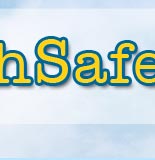 |
 |
 |
 |
 |
 |
|||||||||
Join our mailing list and receive updates about our activities. |
|
Peer Warning Program CAVEAT: Schaefer-Schiumo and Ginsberg (2003) raise a warning about the effectiveness of the Warning Signs video with urban minority high-risk students. As they note, the video utilizes youth offenders from predominantly white, suburban and rural areas, who deal with “bottled up” explosions of violence, rather than minority youth who are exposed to daily bouts of aggression and violence. There is a need to tailor the discussions topics and video materials to the needs of the specific population. Merely importing materials that have been developed for other populations into one’s school may prove ineffective and focus limited resources on questionable interventions. There is a need to build-in evaluation of any intervention program. See Seven Steps to a Safe School WHAT ELSE CAN EDUCATORS DO?
REFERENCES Peterson, J. L., & Newman, R. (2000). Helping to curb youth violence. The APA-MTV |

This web site has been produced by The Melissa Institute for Violence Prevention and Treatment to provide research-based school violence prevention procedures for educators. The web site has been made possible with the generous support of the Robert and Renee Belfer Foundation and other supporters. |
 |
The Melissa Institute for Violence Prevention and Treatment to provide research-based school violence prevention procedures for educators Terms and Conditions |
|